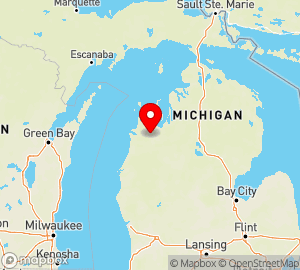Indiana
Indiana State Information

www.in.gov
Area (sq mi):: 36417.73 (land 35866.90; water 550.83) Population per square mile: 174.90
Population 2005: 6,271,973 State rank: 0 Population change: 2000-20005 3.10%; 1990-2000 9.70% Population 2000: 6,080,485 (White 85.80%; Black or African American 8.40%; Hispanic or Latino 3.50%; Asian 1.00%; Other 3.10%). Foreign born: 3.10%. Median age: 35.20
Income 2000: per capita $20,397; median household $41,567; Population below poverty level: 9.50% Personal per capita income (2000-2003): $27,132-$28,838
Unemployment (2004): 5.30% Unemployment change (from 2000): 2.40% Median travel time to work: 22.60 minutes Working outside county of residence: 29.00%
List of Indiana counties:
Indiana Parks
- US National Parks
- Urban Parks
- State Parks
- National Wildlife Refuges
- National Scenic Byways
- National Forests
Indiana
Nineteenth state; admitted on December 11, 1816
Indiana Day, December 11, is not a legal holiday, but has been observed sporadically since Indiana’s General Assembly proclaimed the holiday in February 1925. Schools often hold commemorative programs. The sesquicentennial anniversary in 1966, however, was marked throughout that year with historical pageants and recreations of such notable events as the signing of the state’s constitution.
State capital: Indianapolis
Nickname: Hoosier State
State motto: The Crossroads of America
State bird: Cardinal (Cardinalis cardinalis)
State flower: Peony (Paeonia)
State language: English
State poem: “Indiana”
State river: Wabash
State song: “On the Banks of the Wabash, Far Away”
State stone: Indiana limestone
State tree: Tulip tree (yellow poplar; Liriodendron tulipfera)
More about state symbols at:
www.in.gov/history/2522.htm
More about the state at:
www.in.gov/about.htm
http://www.in.gov/history/5699.htm
SOURCES:
AmerBkDays-2000, p. 825
AnnivHol-2000, p. 206
DictDays-1988, p. 59
STATE OFFICES:
State web site:
www.in.gov
Office of the Governor
State House
200 W Washington St Rm 206
Indianapolis, IN 46204
317-232-4567
fax: 317-232-3443
www.in.gov/gov
Secretary of State
State House
200 W Washington St Rm 201
Indianapolis, IN 46204
317-232-6531
fax: 317-233-3283
www.in.gov/sos
Indiana State Library
140 N Senate Ave
Indianapolis, IN 46204
317-232-3675
fax: 317-232-3728
www.statelib.lib.in.us
Legal Holidays:
Indiana
a state in the northern USA, between Lake Michigan and the Ohio River. Area, 94,000 sq km. Population, 5.2 million (1970), 65 percent of which is urban. Indianapolis is the largest city and the administrative center. The state is slightly hilly, sloping gently to the southeast. The highest point is 378 m above sea level. The climate is moderately continental with hot summers; precipitation is about 1,000 mm a year.
Indiana is an industrial and agricultural state. Of the economically active sector of the population, 35 percent is in industry and 6 percent in agriculture. In 1969, 730,000 persons were involved in processing industries and 7,000 in mining. Machine building (aircraft engines and parts, rockets and automobiles, trucks, farm and road machines, refrigerators, and radio-electronic equipment) is centered in the Indianapolis area and iron metallurgy in Gary, a virtual suburb of Chicago on Lake Michigan; these are the major branches of industry. Chemical and pharmaceutical, rubber, and food-processing industries (meat, flour, and liquor distillation) are also highly developed. In 1970,8 million kilowatts of electricity were generated by the state’s power stations.
Indiana is on the eastern edge of the Corn Belt. The most important crops are corn and wheat. Animal husbandry accounts for 55 percent of the agricultural produce. In 1970, Indiana had 2 million cattle (including half a million dairy cattle), 4.5 million pigs, and half a million sheep. More than 75 percent of the state is farmed. The number of farms in Indiana has fallen from 185,000 in 1940 to 108,000 in 1964. There are 1,000 km of railroad and 150,000 km of paved road in the state. The Ohio River and the lower Wabash River are navigable.
Until the colonialization of the territory of Indiana by Europeans, the area supported many Indian tribes. The first European settlements and forts were built by the French in the late 17th and early 18th century. In 1763, Indiana came under the control of the British. After the War of Independence (1775-83) in North America, Indiana became part of the United States. The colonization of Indiana was accompanied by a series of bloody wars with the Indians, the last in 1811-12, resulting in the extermination of the majority of the Indians and the resettling of the surviving Indians on reservations. Indiana became a state in 1816.
V. M. QOKHMAN